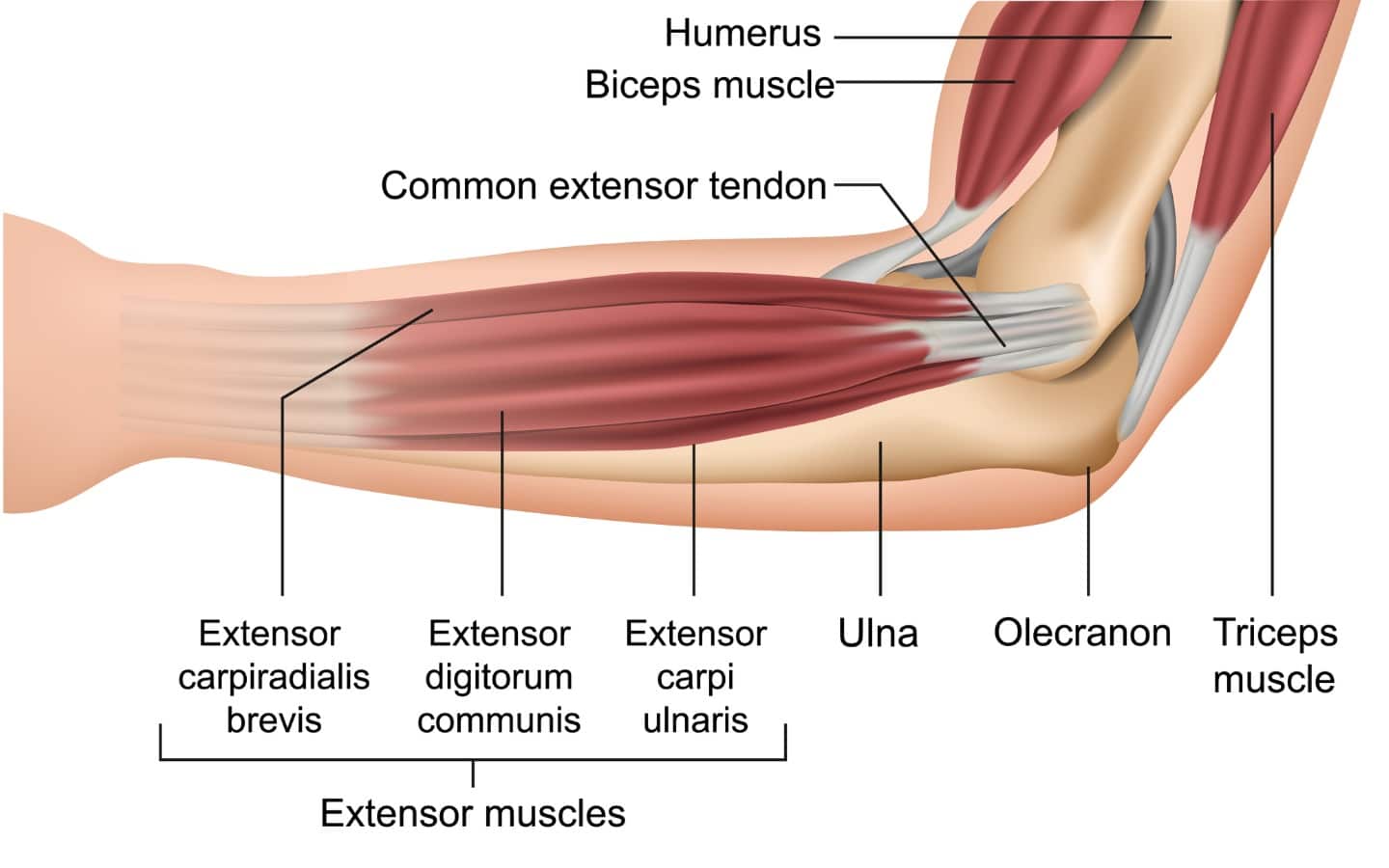
Anatomy Corner: Tennis Elbow
Tennis Elbow refers to an irritation of a tendon attached at the thumb-side (or ‘lateral’) edge of your elbow. Interestingly, participation in tennis is not necessarily a primary risk factor for tennis elbow(1) Let’s take a closer look at the anatomy involved to better understand your risk factors:
The pointiest spot at the back of your elbow is called the olecranon process and is the attachment for your triceps muscle. From there, looking down at your hand with the palm facing up, you can locate your elbow’s lateral epicondyle by finding the bony spot on the outside edge of your elbow joint that sticks out the most to the side. If you have ever experienced tennis elbow pain, also known as lateral epicondylitis or lateral elbow tendinopathy, you know this spot well.
Attaching to your lateral epicondyle is the common wrist extensor tendon, which branches into several muscles controlling the extension of your wrist and fingers. If you make a fist, you can feel activation of that arm’s wrist extensors when touching the common extensor tendon with your opposite hand. Wrist extensor activation is a key component of grip strength, which brings us to the root of tennis elbow pain: activities involving repetitive grip and requiring wrist stabilization can overactivate wrist extensor muscles, which inflame the common extensor tendon near its attachment at the lateral elbow.
On a related note, if you are noticing tension or pain at the pinky-side edge of your elbow, the medial epicondyle, with repetitive grip, this could be more indicative of medial epicondylitis, also known as golf elbow, which involves inflammation of the extrinsic wrist flexor tendons running to the wrist and hand.
Because repetitive wrist activity is the main aggravator of lateral (and medial) elbow pain, treating and/or preventing this condition in physical therapy involves increasing both mobility and stability at the wrist, in addition to manual therapy techniques to help decrease pain and inflammation more immediately. Extracorporeal shockwave therapy, a modality backed heavily by research for this condition(2,3), is also frequently incorporated for Centurion patients with persistent pain. Blood flow restriction (BFR) therapy, which helps improve strength and decrease at least short-term pain(4,5), may also be a component of treatment or prevention (please see this issue’s article on BFR here for more information).
Contact your PT at Centurion if you would like to discuss the above techniques and modalities to address or prevent elbow pain to optimize your Spring cleaning, overhead sports, or travel experience this season!
By Joanna Binney

